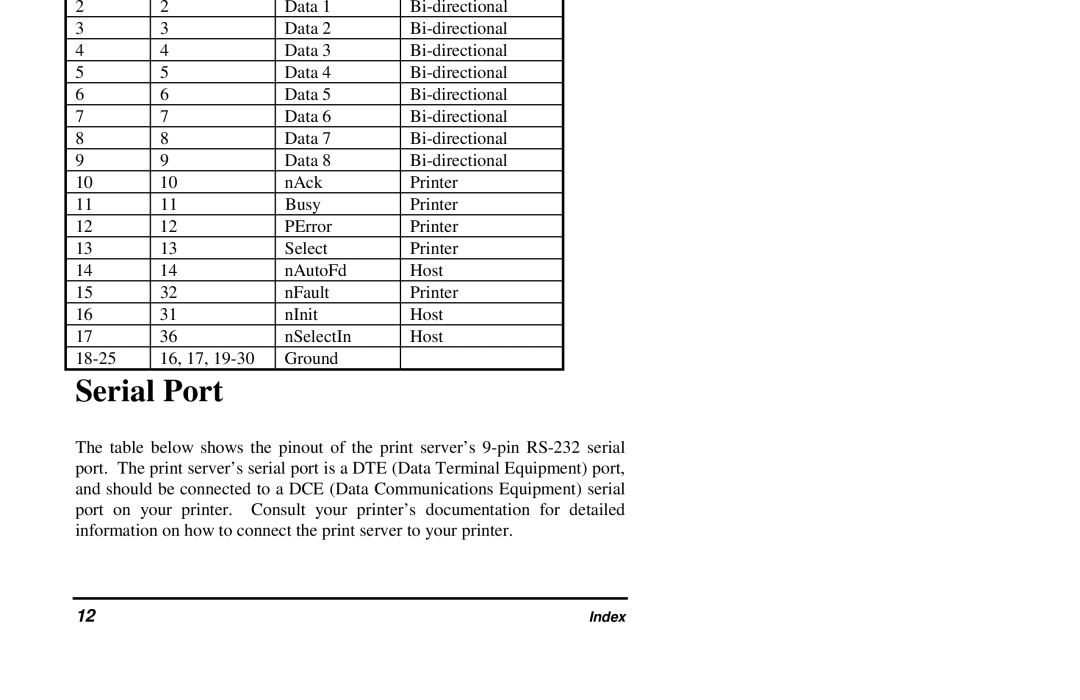2 | 2 | Data 1 | Bi-directional |
3 | 3 | Data 2 | Bi-directional |
4 | 4 | Data 3 | Bi-directional |
5 | 5 | Data 4 | Bi-directional |
6 | 6 | Data 5 | Bi-directional |
7 | 7 | Data 6 | Bi-directional |
8 | 8 | Data 7 | Bi-directional |
9 | 9 | Data 8 | Bi-directional |
10 | 10 | nAck | Printer |
11 | 11 | Busy | Printer |
12 | 12 | PError | Printer |
13 | 13 | Select | Printer |
14 | 14 | nAutoFd | Host |
15 | 32 | nFault | Printer |
16 | 31 | nInit | Host |
17 | 36 | nSelectIn | Host |
18-25 | 16, 17, 19-30 | Ground | |
Serial Port
The table below shows the pinout of the print server’s 9-pin RS-232 serial port. The print server’s serial port is a DTE (Data Terminal Equipment) port, and should be connected to a DCE (Data Communications Equipment) serial port on your printer. Consult your printer’s documentation for detailed information on how to connect the print server to your printer.
